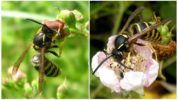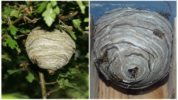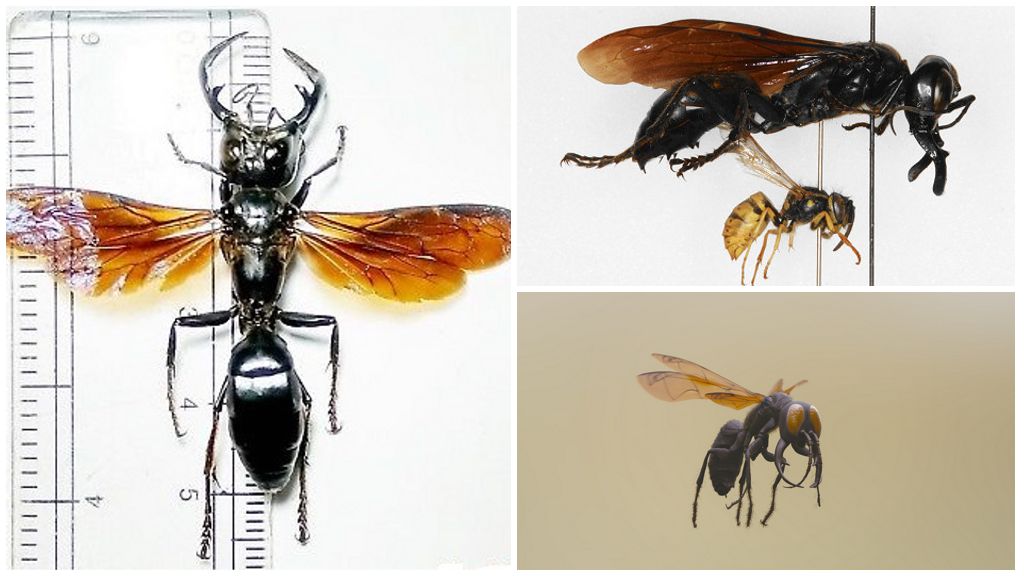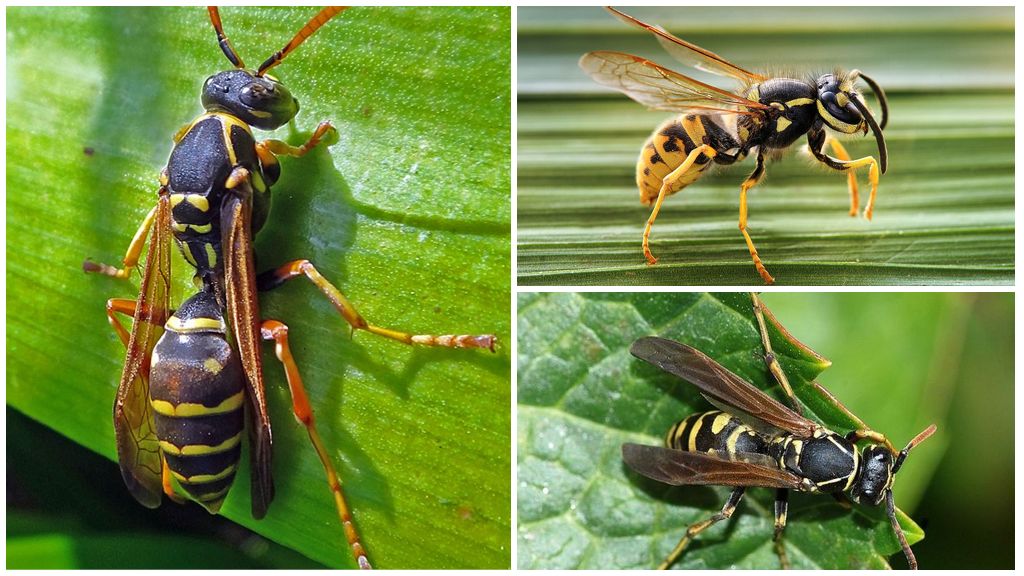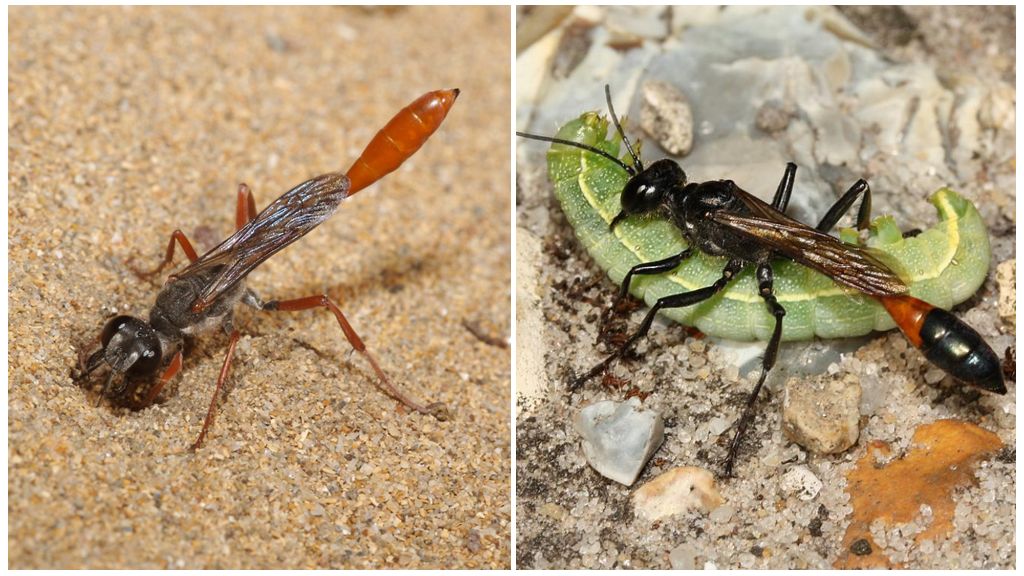- Forest wasp
- Forest Wasp Nutrition
- Forest wasp nest
Forest wasp belongs to the family real wasps. Distributed in India, Pakistan, Africa, Asia Minor, Russia. It is listed in the Red Book of the Moscow Region. The main enemy is insecticidesthat a person uses to control agricultural, forest pests.
Description of appearance
Forest wasp is similar to ordinary paper relatives. Yellow-black color, aspen waist, black head with a straight mustache, powerful jaws. However, the color is dominated by black, the stripes are slightly wider. The wings are transparent narrow. Big eyes are clearly visible on the head.
On a note!
Characteristic for this type of insect the sting used for self defense, attacking the victim.
A photo of a forest wasp can be seen below. The size of the uterus does not exceed 19 mm; working individuals reach a length of 15 mm. Males grow up to 16 mm. Outwardly, it is impossible to determine what kind of wasps came into the field of vision of an ordinary person, only a specialist copes with the task.
Lifestyle
Forest wasps form a hive build nests oval, stick together, jointly feed the larvae. Early spring young uterus looking for a favorable place for the construction of the future nest. Material for construction is made of wood. Spits saliva, waits a couple of minutes, until the top layer softens, pulls together a thin film with powerful jaws, chews. It turns out a sticky sticky mass, from which the female builds initially a leg, and then the first honeycomb.
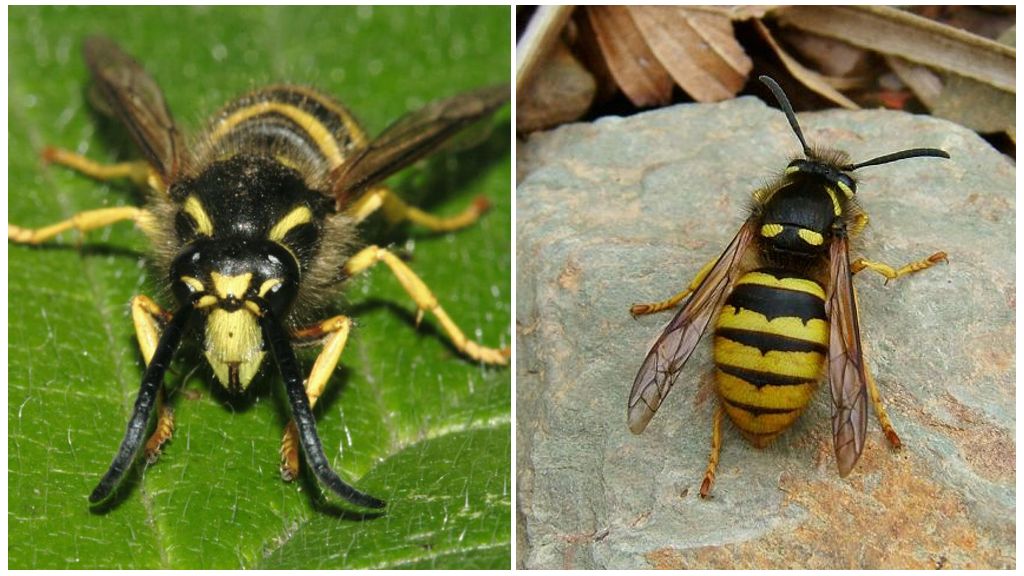
Lays eggs in each individual cell. A few days later, larvae appear from there, which require a large amount of protein food to feed. The female preys on bugs, flies, spiders, bees, small insects. Feeds offspring for about 14 days. At the end of the cycle, the larva pupates, after 2-4 days, working individuals appear on which the uterus lays the responsibility for building the nest, arranging it, feeding the larvae, protecting the hive. Itself is engaged only in laying eggs.
At the end of August, special honeycombs of a larger size are being built to the nest. There, the uterus lays special eggs, from which sexually mature females, males, are born. In early autumn, the young generation mates. Males die, females look for a secluded place for wintering under the bark of trees, in the crevices of wooden buildings.
Interesting!
Life span the working individual is a little more than 1 month, but due to the rapid reproduction, the hive is constantly replenished with new able-bodied members of society. The uterus lives from May to October, dies with the onset of cold weather together with males, working individuals. Around the end of August, the family leaves the nest, the construction of which was worked by more than one generation, the larvae themselves are devoured.
Nutrition
Adult forest wasps prefer liquid plant foods - juices of plants, vegetables, fruits, bee honey. They like ripe berries, apples, grapes, pears. Larvae feed exclusively on protein food, for them adult individuals prey on small insects, spiders, gnaw off pieces of meat, fish.
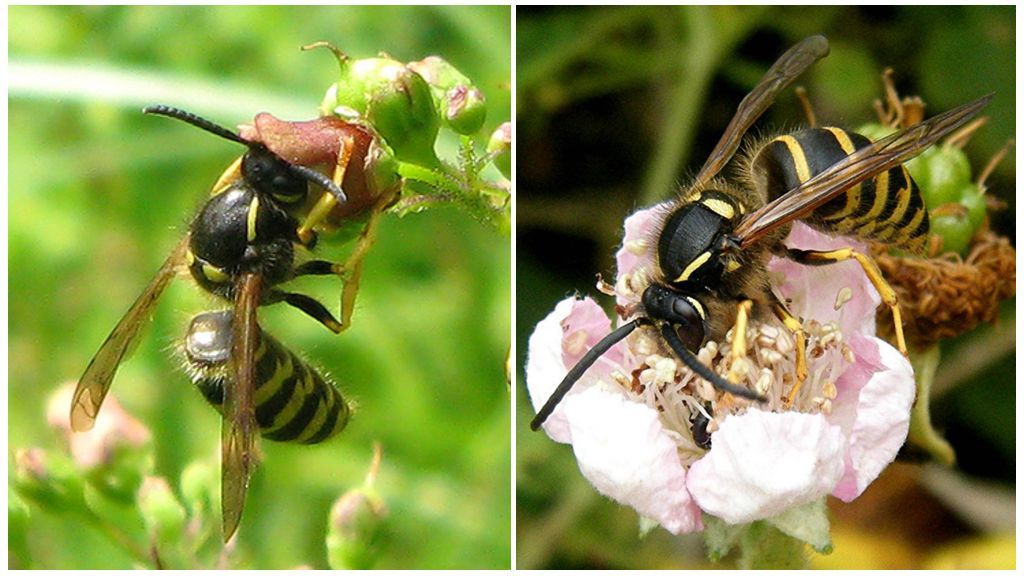
On a note!
A wasp chews food, rolls balls, feeds larvae. Those secrete sticky saliva, which adults eagerly eat. There is a mutual exchange.
Nest
Forest wasps live in the wild in a deciduous forest, but do not mind settling near a person’s house.A spherical nest in the form of a cocoon attaches to wooden buildings, trees, shrubs, less often it builds in the ground. The average size of the aspen house is not more than the parameters of an ordinary apple. Inside there are several dozen working wasps. In some cases, the family has hundreds of individuals, the size of the nest in diameter reaches 30 cm.
Man's possessions are attractive to forest wasps with an abundance of food, the absence of enemies, and many convenient places for building a nest.
- attic;
- roof;
- balcony;
- outbuildings;
- garden;
- vineyard;
- apiary;
- garages;
- walls with cracks.

On a note!
Externally, the nest resembles rolled sheets of toilet paper. Gray, flat surface. The entrance is located below. The family returns to the hive for the night;
Bite hazard
Forest wasps are not much different from ordinary wasps in behavior, lifestyle. They attack a person in self-defense, but the whole difficulty is that any movement the insect can regard as an attack, rushes to attack.
On a note!
At one time, a forest wasp can sting up to 5 times, if necessary, but after applying the first bite trying to leave.
Insects massively attack, protecting their own nest, larvae, and uterus. All other wasp-guards or scouts notify about the danger. Transmit signals of a certain frequency. After a few seconds, a whole hive pounces on a person.
The main danger from a forest wasp attack is allergic reaction on the poison, which is of varying severity. In most cases, it is enough to disinfect the wound, wipe it with alcohol. With a strong allergic reaction, antihistamines are taken, anti-allergic ointment is used.

